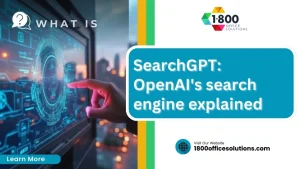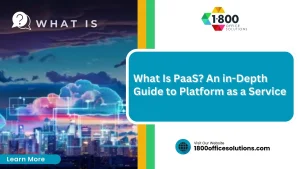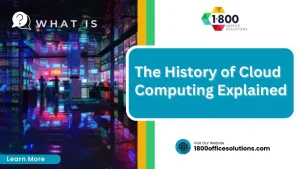What is benefits administration?
AI Overview:
In 2025, benefits administration has evolved from a back-office HR task into a strategic function that directly impacts employee satisfaction, talent retention, and business efficiency. Modern organizations recognize that effective benefits administration is not just about managing insurance or retirement plans—it’s about creating a seamless, compliant, and data-driven employee experience.
But first, let’s clarify what is benefits administration and why it’s essential to every business.

Understanding Benefits Administration: Key Concepts and Importance
Is benefits administration causing daily stress for your business? Understanding what is benefits administration helps leaders see how to manage employee perks efficiently, reduce administrative burdens, and improve satisfaction across all departments.
This section covers the key concepts and importance of benefits administration by outlining its main components and examining common challenges. With the right strategy, business owners can create a more compliant and streamlined HR framework that minimizes errors and boosts morale.
Key Takeaways
- effective benefits administration supports clear, compliant benefit frameworks
- technology integration improves payroll and expense tracking efficiency
- personalized benefit packages enhance employee engagement and satisfaction
- clear communication minimizes confusion during benefits selection
What Is Benefits Administration?

So, what is benefits administration exactly? It’s the process of managing employee benefits—such as health insurance, retirement programs, and wellness initiatives—while ensuring compliance with labor laws and company policy.
Knowing what benefits administration means helps HR teams coordinate between departments, insurance providers, and finance leaders. By defining what is benefits administration in HR, organizations can create transparent systems that improve decision-making and align benefits with overall corporate strategy.
Key components of benefits administration include:
Health insurance plans
Retirement benefits
Employee wellness programs
Effective benefits administration ensures compliance, simplifies communication, and builds a strong foundation for employee trust and engagement.
The Significance of Effective Benefits Administration

Understanding what is benefits administration is essential because it directly influences satisfaction and retention. A well-managed benefits process improves the employee experience, strengthens compliance, and promotes long-term loyalty.
From managing 401(k) contributions to coordinating parental leave, benefits administration creates an ecosystem that supports well-being and performance.
Enhancing Employee Satisfaction Through Benefits
The process of benefits administration improves employee satisfaction by offering reliable services through integrated payroll systems and clear communication between departments. Reliable systems that include disability insurance and 401 benefits provide a framework that supports employee well-being and instills confidence, whether managed internally or via a professional employer organization.
Practical examples in the field illustrate that effective communication and streamlined payroll processes can directly influence the experience of employees. Organizations incorporate benefits such as disability insurance and 401 plans that are managed efficiently, thereby addressing workforce concerns and reinforcing a positive workplace environment.
Impact on Recruitment and Retention Strategies
The careful management of compensation and benefits plays a significant role in ensuring effective onboarding and overall productivity among teams, which ultimately contributes to the organization’s ability to attract quality talent. A structured benefits administration approach, including essential aspects like life insurance and the employee retirement income security act of 1974 regulations, supports recruitment and establishes a reliable work environment:
Effective benefits management practices simplify the process of talent retention by directly addressing workforce concerns and demonstrating the organization’s commitment to employee welfare. The integration of critical elements, such as robust life insurance plans and compliance with the employee retirement income security act of 1974, fosters a sense of security and drives overall productivity throughout the company.
Key Concepts in Benefits Administration

To understand what is benefits administration, it’s important to explore its three main pillars—benefit types, compliance, and technology integration.
Different Types of Benefits: A clear understanding of what benefits administration includes ensures that plans such as health insurance, pensions, and SaaS-based employee portals are balanced and inclusive.
Compliance: Staying compliant is central to what is benefits administration. Tools like BambooHR and decision support systems simplify tracking legal standards and wage requirements.
Technology Integration: Modern software streamlines data management, expense tracking, and reporting for more accurate and compliant outcomes.
Understanding Different Types of Benefits
The organization emphasizes a comprehensive view on benefits, ensuring that all offerings are clearly defined and aligned with current industry practices. The focus lies on integrating software as a service solutions with traditional benefits like retirement plans to support a diverse workforce and boost overall employee retention.
The industry expert notes that effective benefits administration plays a crucial role in creating a balanced mix of offerings, which leads to a positive employee experience. The practical approach involves combining modern software as a service platforms with time-tested retirement options, empowering businesses to sustain a committed workforce over the long term.
The company must focus on regulatory requirements that impact salary structures and remote work arrangements while ensuring a consistent benefits framework. Integrating a decision support system with tools like bamboohr strengthens policy oversight and helps managers verify compliance effectively.
Organizations can reduce compliance issues by regularly reviewing benefits protocols in line with changing laws that affect company operations. Utilizing a decision support system and bamboohr facilitates efficient tracking of salary adjustments and remote work parameters, ensuring tailored approaches that meet legal standards.
The Role of Technology in Streamlining Processes
Modern systems simplify administrative tasks by automating expense tracking and budget management, reducing manual errors and streamlining the setup of health savings accounts while ensuring compliance with the affordable care act and applicable law:
Integrated technology tools offer actionable insights that assist managers with real-time expense evaluation and budget adjustments, thus reducing administrative burdens and facilitating the proper setup of benefits such as health savings accounts while aligning with statutory requirements.
Challenges in Benefits Administration

Even with automation, many companies still struggle with benefits administration challenges—from managing employee expectations to adapting to regulatory updates. Recognizing what is benefits administration in practice helps businesses identify and solve these issues proactively.
Common solutions include:
Clear employee communication
Regular policy reviews
Automation of manual processes through benefits administration software
Managing Employee Expectations
The organization encounters several challenges in balancing employee expectations with established benefits protocols. Effective workforce management and analytics assist managers in addressing employee engagement issues while reducing risk during policy updates.
Employee concerns often stem from discrepancies in information and benefits processes, prompting the need for transparent communication and real-time analytics. The inclusion of well-structured benefits systems can alleviate issues related to loan disbursement and potential risk factors during benefits revisions, as demonstrated by the following approach:
- Reviewing employee feedback for workforce management improvement
- Employing analytics tools to monitor benefit usage
- Implementing clear guidelines to mitigate risk
- Integrating solutions to address loan and employee engagement concerns
Staying Updated With Regulatory Changes
Staying updated with regulatory changes challenges an employer to refine its benefits platform while managing employee benefits efficiently. Keeping abreast of modifications in wage standards and regulations ensures that the benefits package complies with current mandate, thereby minimizing compliance risks and fostering transparency in policy updates.
Regular review of statutory changes empowers organizations to adjust compensation structures swiftly. This approach supports an employer’s commitment to managing employee benefits aligned with emerging regulations and industry benchmarks, ensuring competitiveness and operational consistency.
Addressing Administrative Burdens
Administrators face significant challenges with manual processes that increase inefficiencies in managing the employee benefits program, leading to delays in benefits enrollment. Benefits administrators are streamlining tasks by integrating benefits administration software, which simplifies tasks and reduces the need for repetitive data entry.
Adopting modern systems enables benefits administrators to improve record accuracy and reduce time spent on administrative burdens. The use of benefits administration software supports a smoother employee benefits program by automating essential tasks and enhancing overall workplace efficiency.
Best Practices for Effective Benefits Administration

The best way to strengthen your HR strategy is to understand what is benefits administration best practice—and how to apply it consistently.
Top methods include:
Communicating benefit options clearly
Engaging employees in benefit selection
Providing ongoing education on benefits programs
By implementing these principles, companies can simplify enrollment, reduce confusion, and build trust among employees.
Communicating Benefit Options Clearly
Clear communication of benefit options is essential in benefits administration as it enables employees to understand their available choices such as ichra administration and policy changes, reducing turnover and increasing overall knowledge of the company’s offerings. The approach involves using straightforward language and incorporating feedback from staff to ensure every employee receives accurate and timely information about their benefits.
Organizations that prioritize effective communication find that clearly outlining benefit options directly supports employee engagement and reduces confusion. Emphasizing regular feedback and educating employees on policy details leads to a smoother benefits administration process and helps address common challenges that may affect retention.
Engaging Employees in the Benefits Selection Process
The organization prioritizes involving employees in the selection of benefit options by offering personalized sessions that discuss features like pet insurance and paid time off, ensuring a clear understanding of available choices. By employing data management tools and expert advice via employee benefits security administration, it facilitates a straightforward decision-making process that meets individual needs and supports overall job satisfaction.
Expert teams provide actionable insights during benefits meetings, highlighting the impact of each option on long-term investment in employee well-being. This approach fosters a work environment where transparent communication and data management drive informed selections, reinforcing a commitment to effective benefits administration.
Continuous Education on Benefits
The organization emphasizes continuous education on benefits as a key strategy for effective benefits administration; they utilize a tool powered by artificial intelligence to provide timely updates and insights that support customer service excellence and improve customer experiences during vacation planning and benefits reviews:
- Regular training sessions
- Workshops integrating modern software
- Data analysis on benefit preferences
Continuous education helps the team stay informed and agile in adapting to regulatory and industry changes while ensuring that every customer receives personalized support. The process includes leveraging customer feedback and practical examples to refine training materials that further enhance the overall benefits administration framework.
Measuring the Success of Benefits Administration

To know whether your strategy works, it’s important to measure outcomes. Modern analytics tools allow HR teams to track satisfaction, engagement, and cost-effectiveness—key indicators of what is benefits administration success.
Through real-time data and employee feedback, organizations refine their offerings and make data-driven decisions that reinforce business goals.
Assessing Employee Satisfaction and Usage
The organization utilizes expert insights and real-time internet data to assess employee satisfaction with benefits, ensuring that workplace engagement remains high. This approach emphasizes efficiency and scalability in gathering feedback, allowing managers to quickly identify and address areas that require improvement.
Data-driven evaluations highlight the impact of benefits on the overall workplace environment by tracking usage patterns and satisfaction levels. Expert analysis of this information supports strategic decisions that boost efficiency and ensure that systems can scale to meet changing requirements.
Analyzing Cost-Effectiveness of Benefits Offered
The organization evaluates cost-effectiveness by comparing the value of each benefit package to its impact on job satisfaction and stress levels, ensuring payment processes are efficient and transparent. The integration of an intranet for real-time data monitoring supports decision-making, allowing the company to adjust the employee assistance program in response to feedback.
Through careful analysis of benefit usage, the company observes that streamlined payment procedures and an effective employee assistance program contribute to improved job satisfaction and reduced stress. Practical adjustments based on intranet data result in enhancements that drive profitability and support overall workforce well-being.
Making Data-Driven Adjustments
The organization uses real-time data to adjust benefits programs, ensuring that every enhancement provides a competitive advantage and serves as a valuable asset. This data-driven approach supports innovation in managing options such as dental insurance and leverages platforms like paycom to refine employee benefit packages:
- Review performance metrics
- Monitor benefit usage trends
- Integrate cost-effective solutions
Managers apply actionable insights from data analysis to optimize benefits administration and address common challenges while keeping expenses in check. These adjustments contribute to rapid innovation and improved satisfaction levels, with each change reinforcing the overall strategy for a competitive advantage.
Future Trends in Benefits Administration

Looking ahead, the future of benefits administration revolves around personalization and digital transformation. As companies invest in mobile platforms and AI tools, the definition of what is benefits administration continues to evolve—becoming more flexible, transparent, and employee-centered than ever.
Personalization of Benefits Packages
Modern benefits administration strategies focus on delivering personalized benefit packages using precise information and an integrated api, with organizations emphasizing targeted education on available options by leveraging mobile device technology to meet individual employee needs:
The approach underscores the importance of tailored benefit plans that incorporate user-friendly education and a refined strategy to address specific employee pain points, ensuring information is accessible on mobile device platforms and integrated through a robust api framework.
The Rise of Digital Benefits Platforms
The emergence of digital benefits platforms modernizes benefits administration by providing a user-friendly interface that streamlines accounting and research tasks. The approach improves organizational culture by simplifying complex processes, reducing manual tracking of debt and other financial metrics, thereby enhancing the overall management system.
Digital benefits platforms offer real-time data and actionable insights that support efficient decision-making related to employee benefits. This method allows experts to monitor trends and refine benefits strategies, bringing clarity to accounting processes and strengthening the relationship between financial accountability and company culture.
Adapting to a Diverse Workforce
The organization adapts to a diverse workforce by integrating tools such as a real-time dashboard and innovative design elements to support varied employee needs, including specific benefits like veterans affairs life insurance, healthequity hsa, and ssi administration. The approach is structured and segmented to address different categories of benefits through customizable options and comprehensive reporting:
- Flexible dashboard configurations
- Targeted benefit designs
- Specialized offerings for veterans affairs life insurance
- Efficient management of healthequity hsa
- Streamlined ssi administration processes
The firm applies expert knowledge to prioritize transparency and usability, ensuring that each employee can navigate their benefit selections with ease while managers monitor usage effectively. This strategy directly supports operational consistency and addresses specific workforce challenges by offering clear, actionable insights and definitive benefits management solutions.
Frequently Asked Questions
What is the purpose of benefits administration?
Benefits administration streamlines employee programs like insurance and retirement schemes, ensuring regulatory compliance and efficient cost management, which supports business operations and employee satisfaction.
How does effective benefits administration help organizations?
Effective benefits administration reduces administrative costs, boosts employee satisfaction, ensures legal compliance, and streamlines operations. This enables organizations to optimize workforce performance and strategically allocate resources, enhancing overall business efficiency and growth.
What key concepts define benefits administration?
Benefits administration coordinates employee eligibility, cost-sharing arrangements, compliance protocols, and claim processing while ensuring clear communication and precise record keeping for efficient office equipment service and cybersecurity support.
What common challenges exist in benefits administration?
Common challenges in benefits administration include maintaining accurate data, managing costs, complying with evolving regulations, and coordinating efficient communication among various stakeholders, ensuring that office equipment and IT systems support secure, effective operations.
What best practices improve benefits administration success?
Effective benefits administration relies on secure digital systems, streamlined communications, consistent employee training, and robust IT support that maintain data integrity while adapting to evolving business needs.
Conclusion
Ultimately, what is benefits administration? It’s the structured process of managing employee benefits efficiently and compliantly to support satisfaction, retention, and business performance.
By embracing modern tools, clear communication, and continuous education, organizations can transform benefits administration from a stressful HR duty into a strategic advantage that drives engagement and long-term growth.











